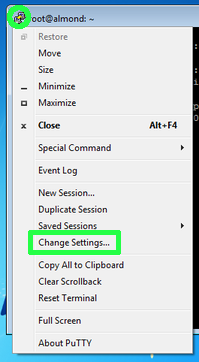
This eliminates the need for MacPorts or other make utilities. This project simply packages puttygen from the PuTTY 0.62 source in a convenient Xcode project. You can compile PuTTY source on Mac if you have MacPorts installed - I don't and didn't want to. It includes an easy utility to convert in and out of PPK format, but it only runs on Windows by default. However, its PPK files are incompatible with the standard SSH key format used on Mac OS X (and every other Unix-y OS I've ever used). Is an amazingly good project that does pretty much everything you'll ever need to use SSH on Windows.

Read my Ezoic review to find out how.Puttygen-osx Xcode project for building puttygen command line tool for Mac OS X. I increased my AdSense revenue by 200% using AI 🤖. Follow me on Twitter, Facebook and YouTube, or 🍊 buy me a smoothie.
 How to Install VNC on Ubuntu 18.04 & 16.04 (Windows, Linux and Mac). If you’re using Ubuntu, I’ve written a guide for installing a VNC server and connecting to it through a secure SSH Tunnel using PuTTY. Disable Sudo Password Prompt or Extend Timeout in Linux VNC via a PuTTY SSH Tunnel. However, this requirement can be disabled per session or permanently, or you can extend the inactivity timeout. This is the recommended behaviour to prevent unauthorised commands being run by someone or a malicious script in your absence. PuTTY and SSH Key-Based Authentication (Windows) Disable Sudo Password Prompt or Extend Timeout in LinuxĮvery time you issue a sudo command, Linux asks for your user password after a certain inactivity timeout, usually 5 minutes. SSH keys can allow you to connect to a server, or multiple servers, without having to remember or enter your password for each system. Storing your password in a Windows shortcut is not very secure though, is it?Īs well as offering additional security, SSH key authentication can be more convenient than the more traditional password authentication. Now when you double-click the shortcut it will bring you straight into your Linux server without having to enter username or password. (Your path may differ depending on where putty.exe is installed.) "C:\Program Files\PuTTY\putty.exe" -ssh -pw PaSwOrD The Target field should now look something like this.
How to Install VNC on Ubuntu 18.04 & 16.04 (Windows, Linux and Mac). If you’re using Ubuntu, I’ve written a guide for installing a VNC server and connecting to it through a secure SSH Tunnel using PuTTY. Disable Sudo Password Prompt or Extend Timeout in Linux VNC via a PuTTY SSH Tunnel. However, this requirement can be disabled per session or permanently, or you can extend the inactivity timeout. This is the recommended behaviour to prevent unauthorised commands being run by someone or a malicious script in your absence. PuTTY and SSH Key-Based Authentication (Windows) Disable Sudo Password Prompt or Extend Timeout in LinuxĮvery time you issue a sudo command, Linux asks for your user password after a certain inactivity timeout, usually 5 minutes. SSH keys can allow you to connect to a server, or multiple servers, without having to remember or enter your password for each system. Storing your password in a Windows shortcut is not very secure though, is it?Īs well as offering additional security, SSH key authentication can be more convenient than the more traditional password authentication. Now when you double-click the shortcut it will bring you straight into your Linux server without having to enter username or password. (Your path may differ depending on where putty.exe is installed.) "C:\Program Files\PuTTY\putty.exe" -ssh -pw PaSwOrD The Target field should now look something like this. 
Replace john with your username, 192.168.1.10 with your server IP and PaSsWoRd with your own password.

We are going to add a switch to this.Īfter the double quotes, paste in the following -pw PaSsWoRd It shows the path to putty.exe in Program Files. Right-click on your new shortcut and click Properties. It’s usually located in C:\Program Files\PuTTY or C:\Program Files (x86)\PuTTYĮnter a name for you shortcut. Right-click the Desktop, select New and Shortcut.Ĭlick Browse and navigate to the PuTTY folder.








 0 kommentar(er)
0 kommentar(er)
